Monterey I & II: The (Almost) Forgotten First Watches of Louis Vuitton
by Martin Green
People often assume that I started writing about watches because I like them so much and that I find writing easy.
Both of these assumptions are true, but they are not the complete reason; in fact, they are likely to be less than half the reason. That other half is likewise made up of two parts: it is the stories behind the watches and the people who create them that intrigue me.
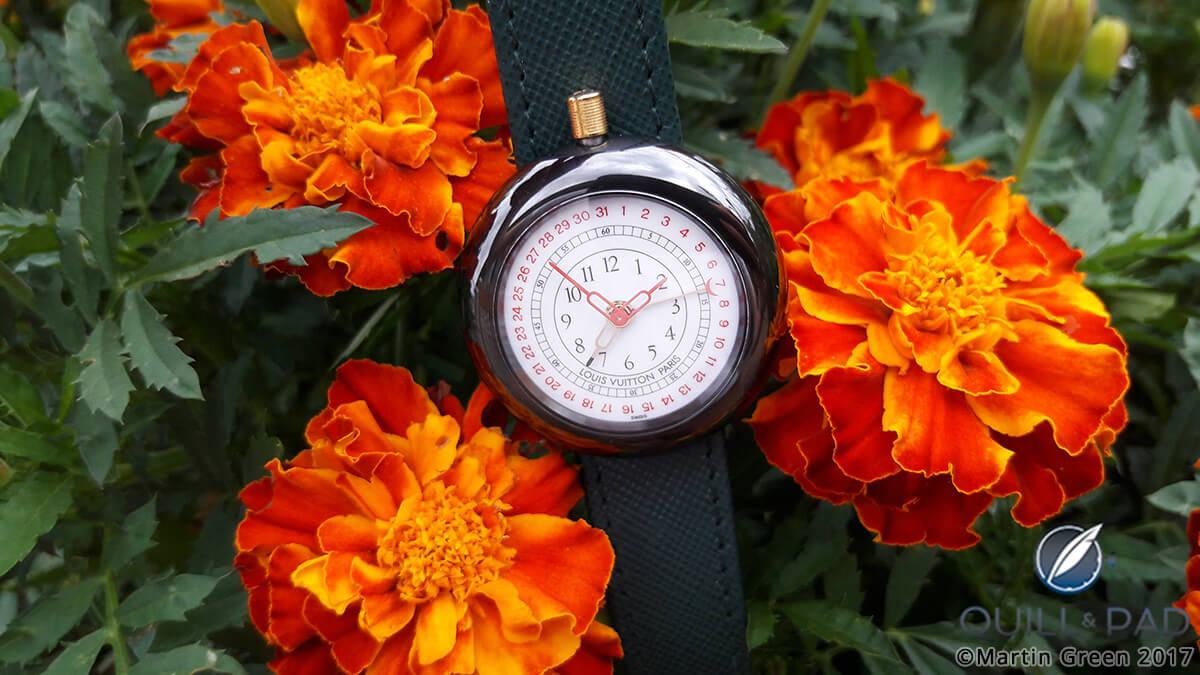
Louis Vuitton Monterey II
This is one of those stories in which all of these elements come together in what seems to be an unlikely combination of people and brands leading to an extraordinary, but unfortunately almost forgotten, pair of watches.
Gae Aulenti: a grandissima lady of architecture
The story starts with Gae Aulenti (1927-2012), who was born in the town of Palazzolo dello Stella, near Trieste, Italy. At that time, nothing indicated that she would become one of Italy’s leading ladies of architecture and design.
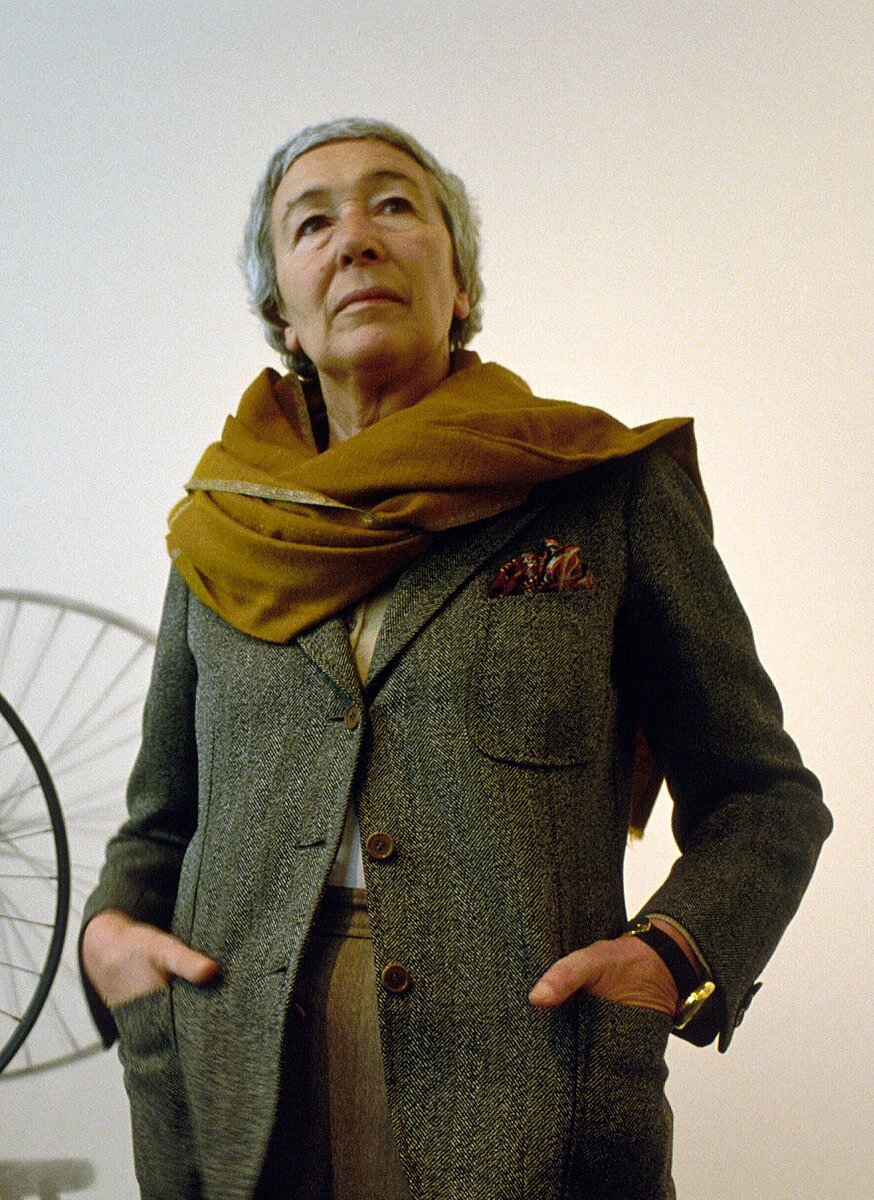
Gae Aulenti wearing the Louis Vuitton Monterey I (photo courtesy Gorup de Besanez)
While her parents wanted her to become a housewife, she rebelled and went to the Polytechnic University of Milan to study architecture, showing a spirited determination that would become her signature as well as define her career. She graduated in 1954, one of just two women from a class of 20.
Aulenti was always a woman with an opinion and despite opposition and criticism, she was never afraid to share it. After graduating, she joined the Neoliberty movement, eventually spearheading the 1950s Italian architectural movement that rejected Bauhaus and modernist principles, focusing more on rational, organic architecture and continuing the development of cities with buildings that were closely connected to their identities.
She was also averse to following fashion, proclaiming that when it dictated her to wear red, she felt the need to dress in green.
This drew attention, from, among others, Gianni Agnelli, patriarch of the Fiat empire. He became a lifelong friend and utilized her significant talent to develop car showrooms all over Europe, as well as design his ski lodge in St. Moritz and take charge of the renovation of Palazzo Grassi in Venice.
It does not do Aulenti’s career justice to summarize it, but given her extensive work, both as a designer and as an architect, it is almost impossible not to. Alongside her work for Agnelli, she designed showrooms for Olivetti, sets for La Scala, Milan’s famed opera house, furniture for design brands including Kartell, Knoll, and Zanotta, and lamps for Stilnovo and Artemide.
————————————————————————————————————–
—————————————————————————————————–
Paris’s Gare d’Orsay dilemma
In 1981, she was chosen for a task that would become her most famous project yet: to convert Paris’s Gare d’Orsay into a haven for impressionist art.
Built between 1898 and 1900, Gare d’Orsay served as the terminus for railways arriving into Paris from the southwestern part of France. Located on the left bank of the Seine, it occupies a prime piece of real estate in the French capital.
In 1939 the Gare d’Orsay was demoted to receiving only local trains as its platforms were not long enough to accommodate the larger, cross-country trains. In 1970 there were plans to demolish the station in favor of a new hotel. This was successfully blocked by the minister for cultural affairs, who proposed protecting the Gare d’Orsay by placing it on the list of historic monuments, a position that was confirmed in 1978.
However, since the station did not serve as a railway station anymore, another purpose for it had to be found.
It was eventually proposed to create an art museum dedicated to the period between 1848 and 1915, effectively combining both the impressionist and post-impressionist movements. Aulenti was in charge of the interior design, a momentous task: how do you convert an enormous open train station space into a sanctuary where visitors can enjoy some of the most famous and beautiful art pieces the world has ever seen?
This was just the type of challenge Aulenti excelled at. The result was a unison of old Paris and new Paris, effectively giving the large open space a more appropriately intimate character to display the art pieces, while at the same time maintaining the grand overall look of the train station. While the criticism from her peers and trade magazines was brutal, Aulenti summarizes it best herself, “The press was very rude, but 20,000 people a day stand in line waiting to get in.”
And that makes Gare d’Orsay one of the most important and most visited art museums in the world.
—————————————————————————————————–
—————————————————————————————————–
The unicorn: Monterey I
We do not know if Aulenti met Louis Vuitton during her time in Paris or later, but together they began a tradition that has remained in place until today. Most people think that Louis Vuitton’s first watch was the Tambour, which was launched in 2002, however the brand actually launched a watch collection that began with Monterey I in 1988.
This was an unusual world time watch with date and moon phase. The Monterey I was powered by a quartz movement and housed in an 18-karat yellow gold case.
Its designer? Gae Aulenti.

Gae Aulenti wearing the Louis Vuitton Monterey I that she designed (photo courtesy Martinelli Luce)
Monterey I is an enigma as even finding pictures of it is rare, let alone the watch itself. Louis Vuitton most likely didn’t make very many of them. I saw one for sale a few years ago, but didn’t act upon it fast enough and still regret that to this day as I haven’t seen another since.
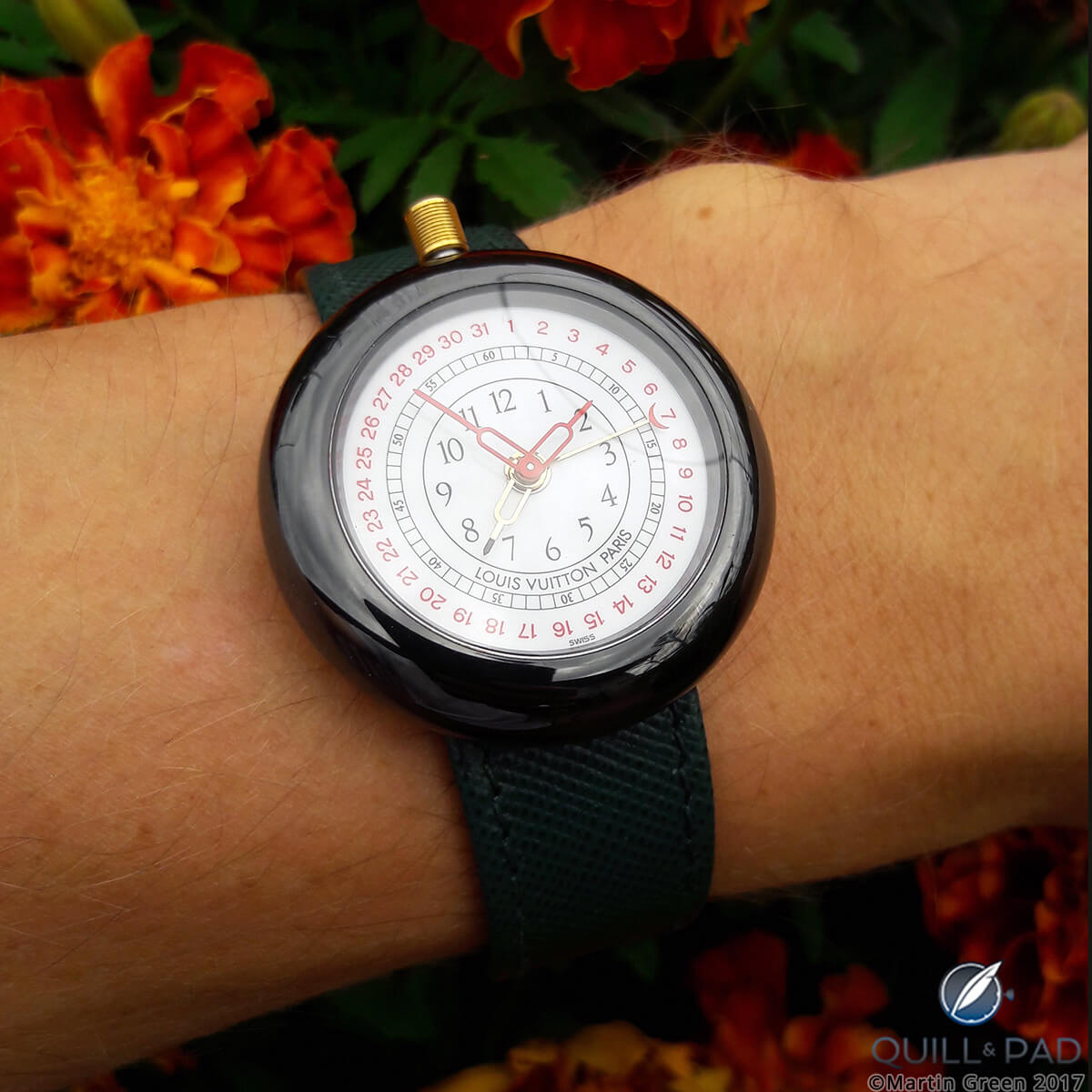
Louis Vuitton Monterey II on the wrist
Less complicated and slightly less rare, yet equally exquisite, was the Monterey II, also designed by Aulenti. The watch itself is simpler then the Monterey I, only indicating the date as well as an alarm function, again powered by a quartz movement.
What is so unique about both the Monterey I and II is that neither Louis Vuitton nor Aulenti seemed to have the slighted interest in following the traditional dogma of the watch industry. For Aulenti this was part of her character, but for Louis Vuitton it was more remarkable as it would without a doubt have been more profitable to create a more mainstream design.
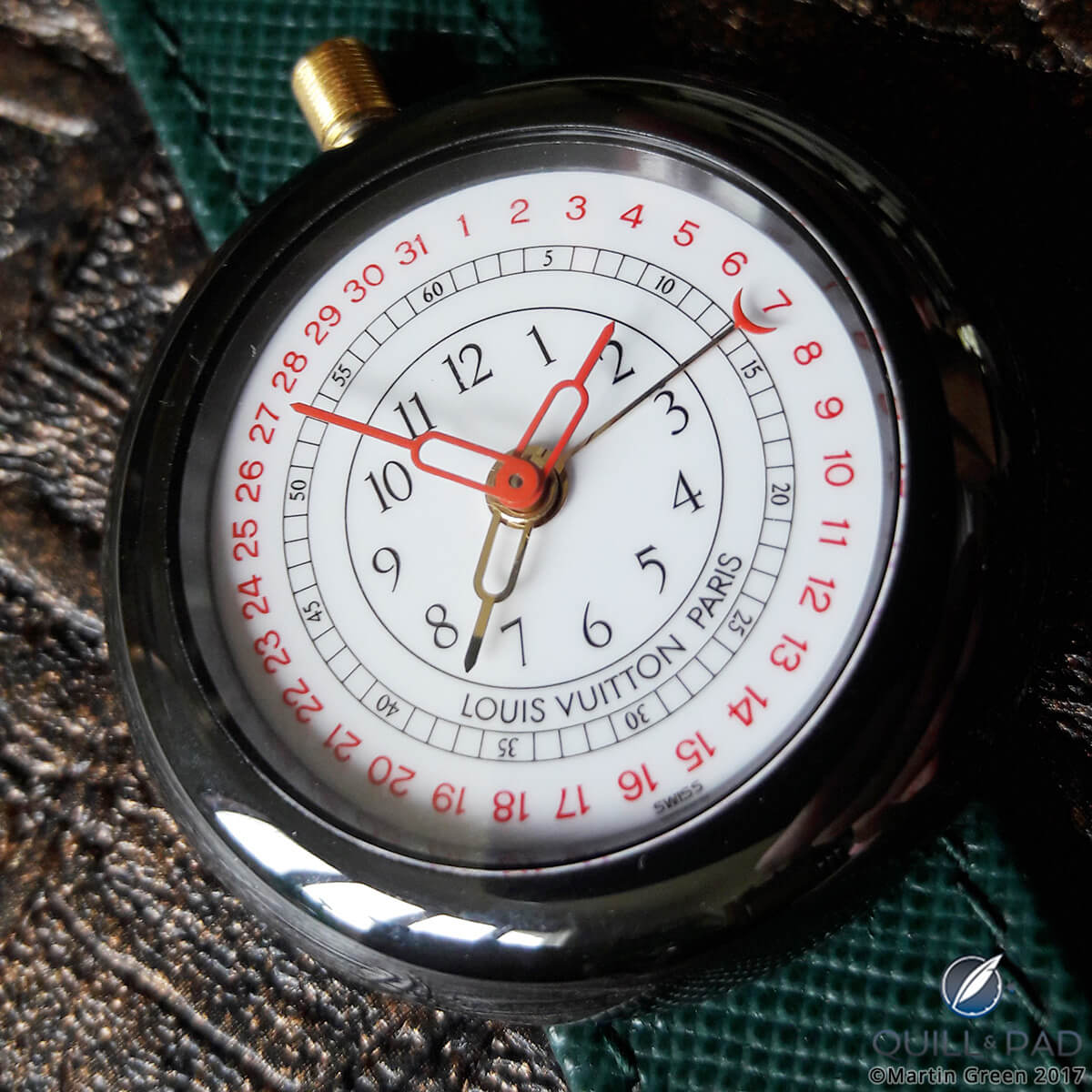
Louis Vuitton Monterey II
The Monterey is anything but mainstream. Its crown protrudes from the top of the case, earning this watch the nickname “unicorn.” The dial seems to be the reverse of most watches with Arabic numerals to mark the hours in the middle encircled by a railroad track for minutes, while the date numerals in bright red occupy the outer perimeter.
The watch also lacks lugs; instead, a single-piece strap is pulled through the back of the watch. It is fitted with a clasp similar to that of Louis Vuitton bags and suitcases.
—————————————————————————————————–
—————————————————————————————————–
From Paris to Schaffhausen
The story doesn’t end there, as in the late 1980s Louis Vuitton didn’t have La Fabrique du Temps or any other capability to produce watches (see Louis Vuitton’s Journey To Watch Nirvana).
Louis Vuitton and Aulenti also chose a material for the case that in the 1980s was quite unique: ceramic. In fact, the Monterey II was one of the very first ceramic watches. In order to make it, Louis Vuitton turned to one of the few manufactures already working with this material: IWC.
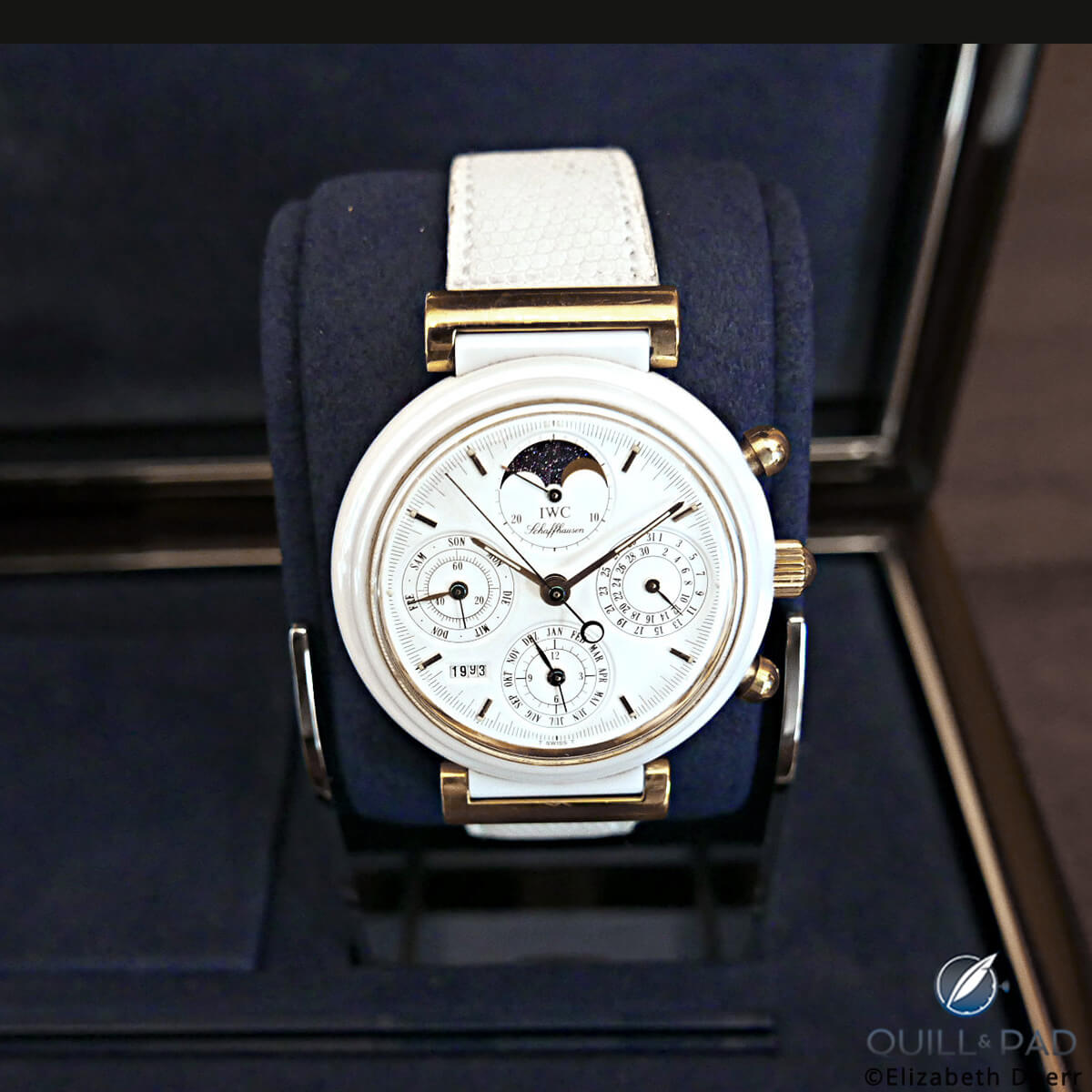
IWC Da Vinci in a ceramic case from 1986
The Schaffhausen brand had created black and white versions of Kurt Klaus’s perpetual calendar masterpiece, the Da Vinci, with ceramic cases. The Swiss-German brand did the same for the Monterey II, making it available in either black or dark green. The difference between these two colors is very difficult to see on photographs; you almost need to have them side by side to reach a definitive conclusion which is which.
Because of its ceramic case and the high build quality thanks to the help of IWC, many of the Monterey II watches are still in remarkably good condition.
The core of Louis Vuitton’s watchmaking “DNA”
While the Monterey has unfortunately been swallowed by the swamp of obscurity, its contribution to the watchmaking “DNA” of Louis Vuitton hasn’t. Its non-conformist approach has been preserved in watches like the Escale Time Zone and Escale Spin Time, which set Louis Vuitton apart in the world of haute horlogerie in a way that Aulenti would most likely have approved of.
The Monterey II is now the slightly eccentric choice for watch connoisseurs who enjoy the unique story behind this watch as well as being able to wear an elegant reminder of the talent that was Gae Aulenti.
And if anyone should happen to come across a Monterey I, please be so kind as to drop me a line!
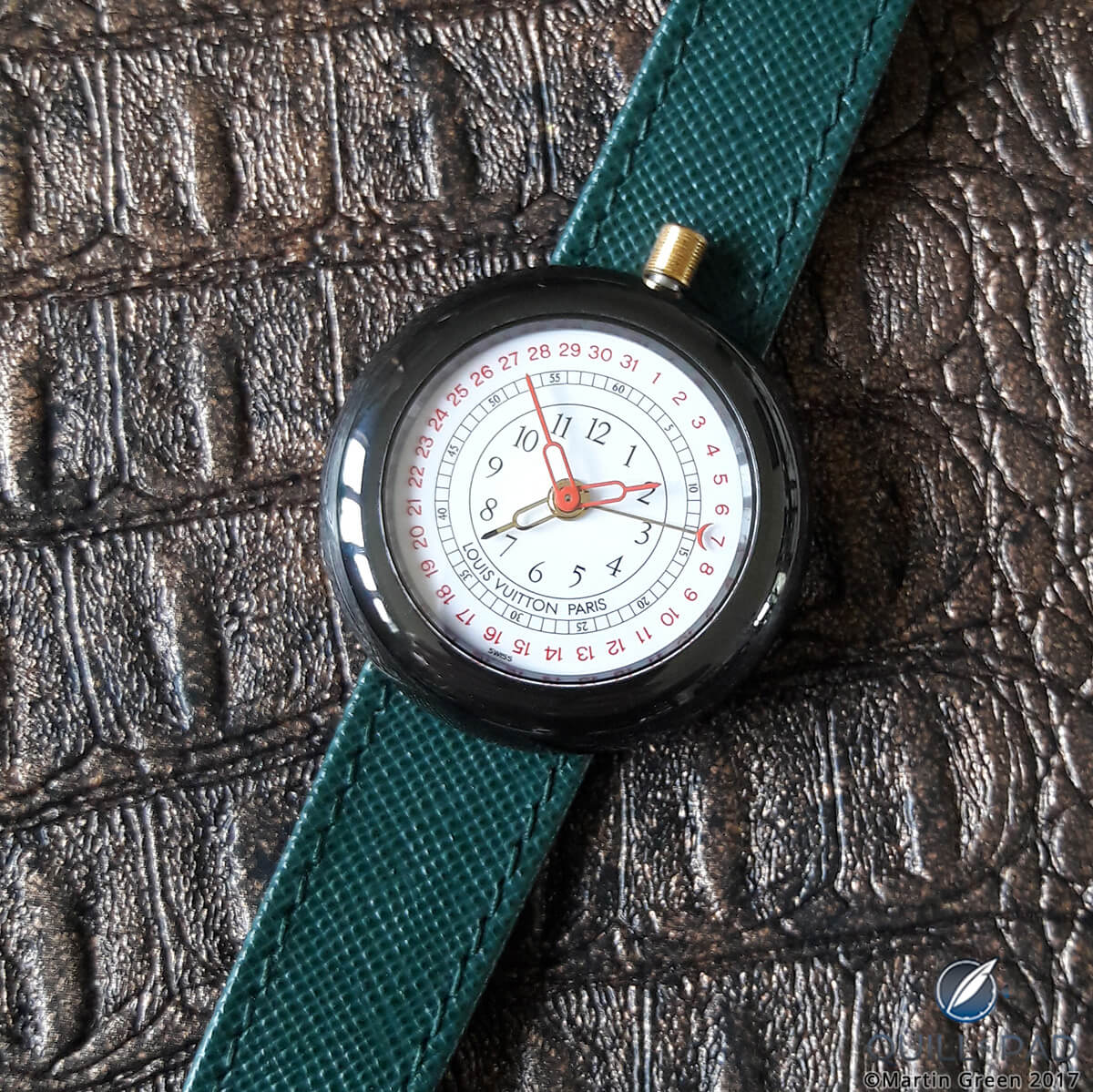
Louis Vuitton Monterey II
Louis Vuitton had stopped making straps for the Monterey, so the owner of this watch above resorted to the expertise of Manufacture Jean Rousseau to have a custom strap created in the style of Louis Vuitton to fit the watch. This was done using his own specifications for green embossed calfskin with a green sharkskin lining. However the esteemed James Dowling informs us that Louis Vuitton starting making Monterey straps again in 2021.
Quick Facts Louis Vuitton Monterey II
Case: 37 mm, green or black ceramic
Dial: green lacquered dial
Movement: ESA quartz
Functions: hours, minutes; date, alarm
Production years: as of 1988, unknown how for how long and how many were manufactured
* This article was first published 12 September 2017 at Monterey I & II: The (Almost) Forgotten First Watches Of Louis Vuitton
You may also enjoy:
Louis Vuitton Tambour Carpe Diem: A Striking Reminder To Make Every Precious Moment Count
History Of Ferrari Watches: The Unlikely Story Behind The Cartier Formula Ferrari
100 Years Of The Cartier Tank Cintrée: 2021’s First Commemorative Centennial Limited Edition ‘Tanks’
Leave a Reply
Want to join the discussion?Feel free to contribute!

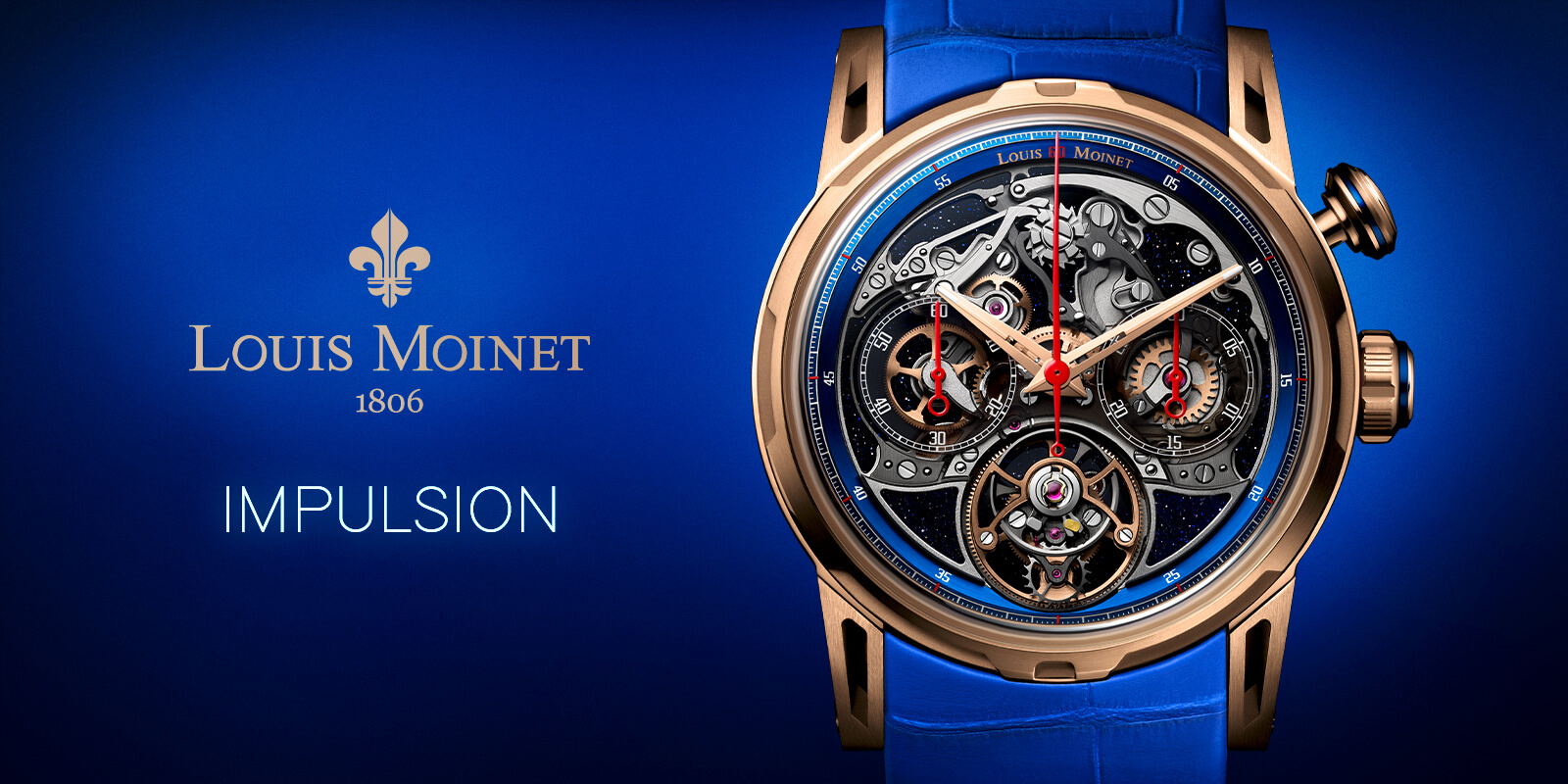
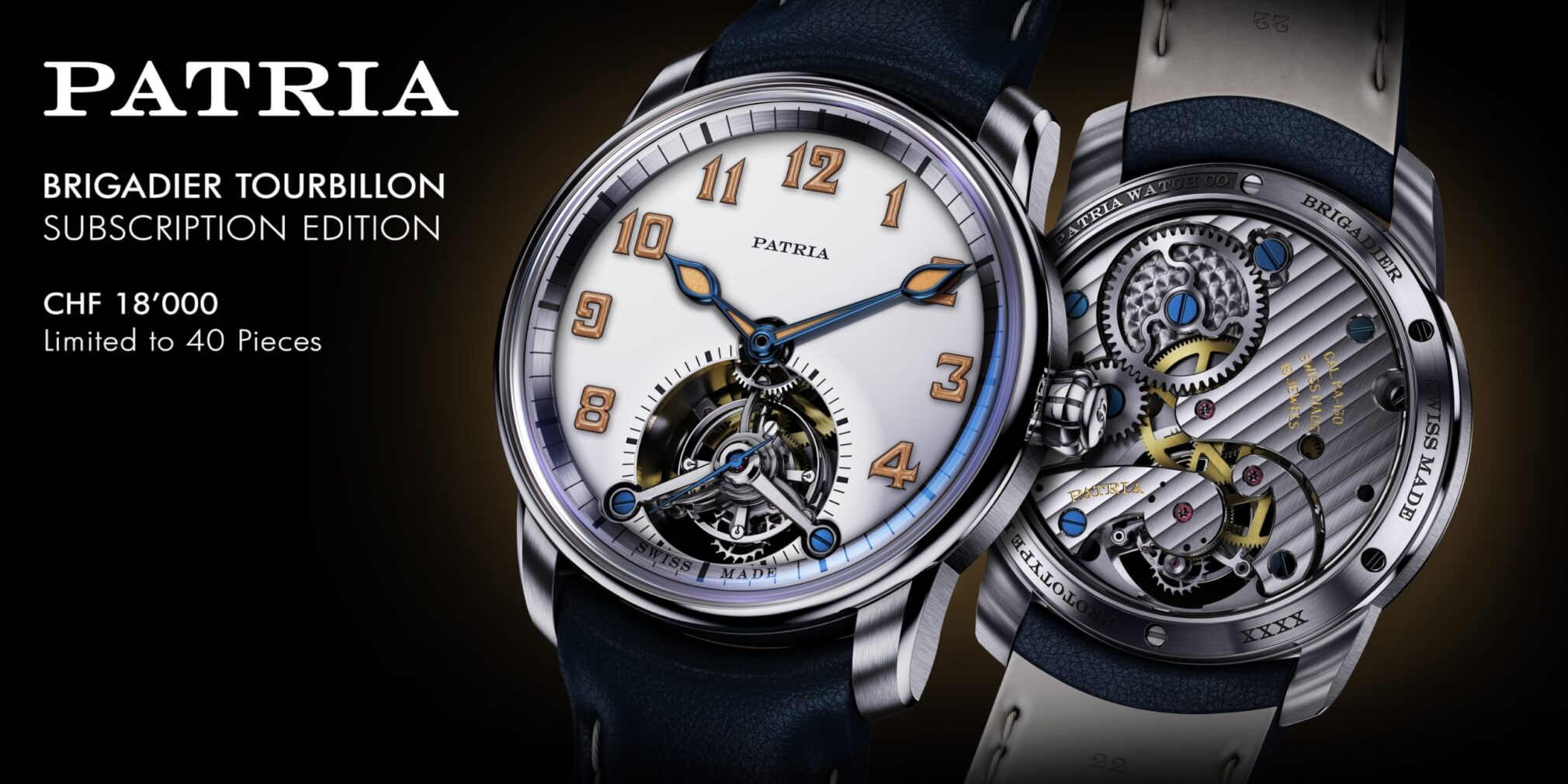


I listed errors in the piece last time you republished this old article
The Monterey 1 does NOT have an alarm, this is only fitted to the Monterey 2, and Vuitton have been remaking the straps for both versions since late 2021.
I can be confident of both these facts as I located my WG Monterey 1 in late September 2021 and my straps were ready towards the end of that year.
Thank you James and corrected.
Regards, Ian
Would you be willing to sell your WG monterey 1?